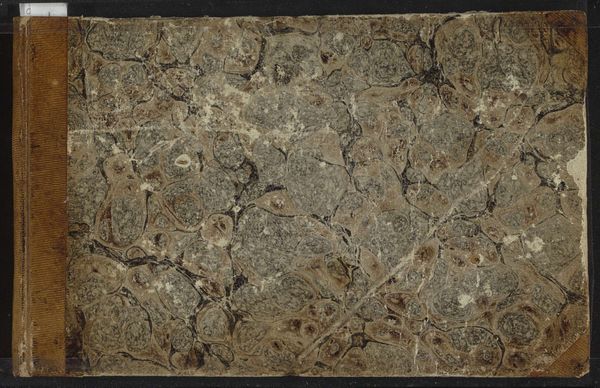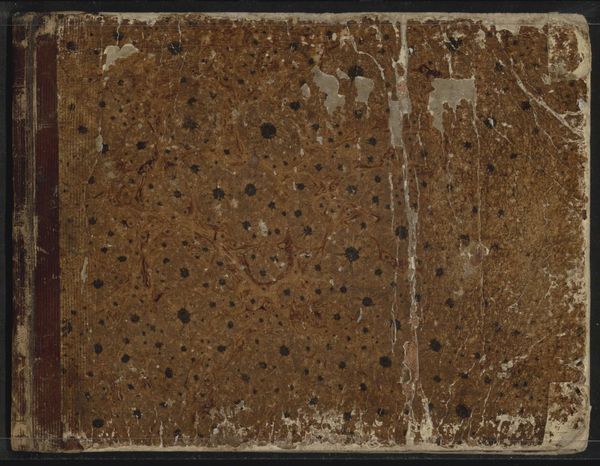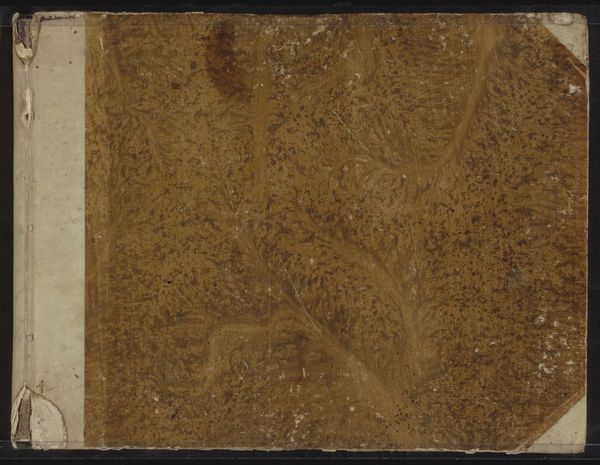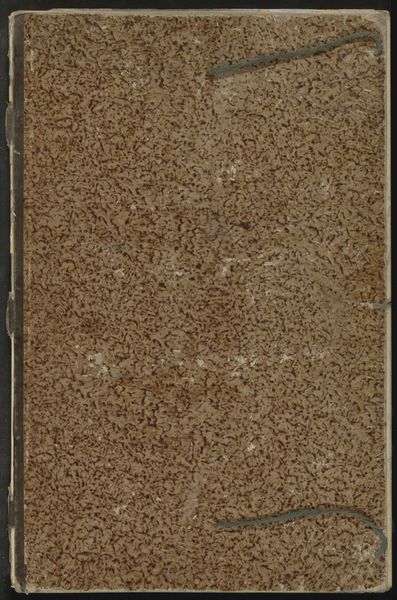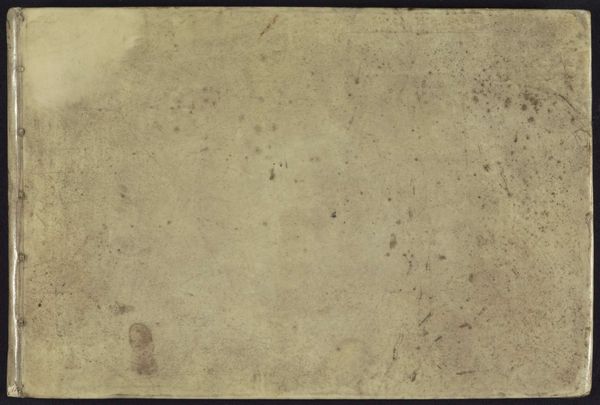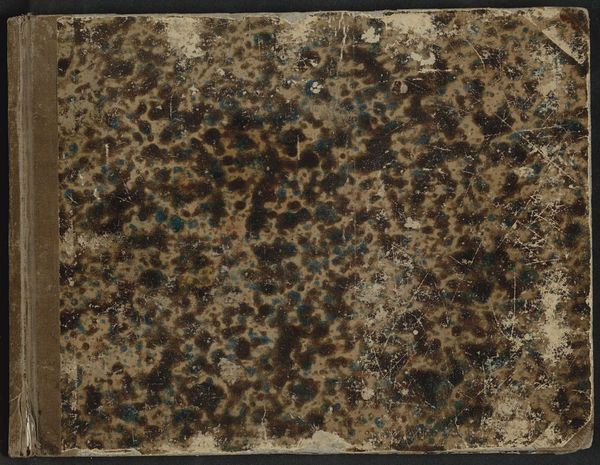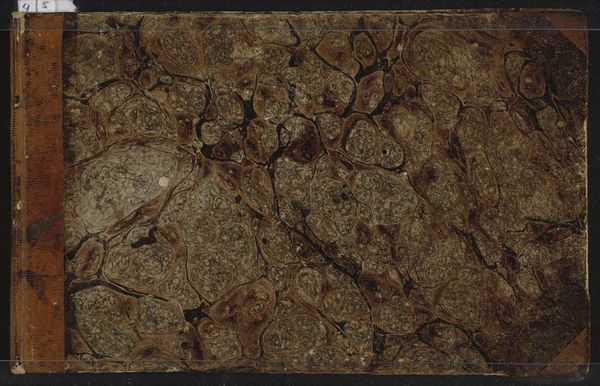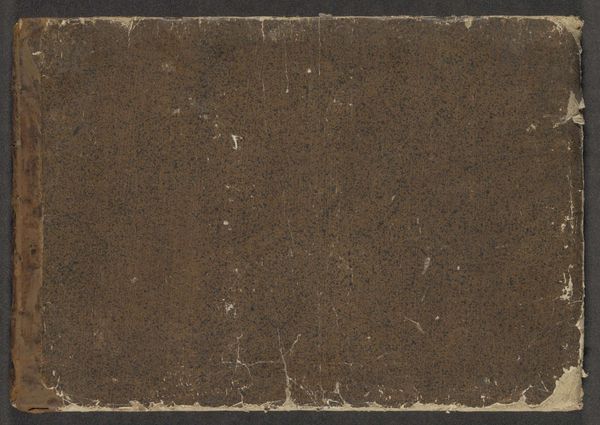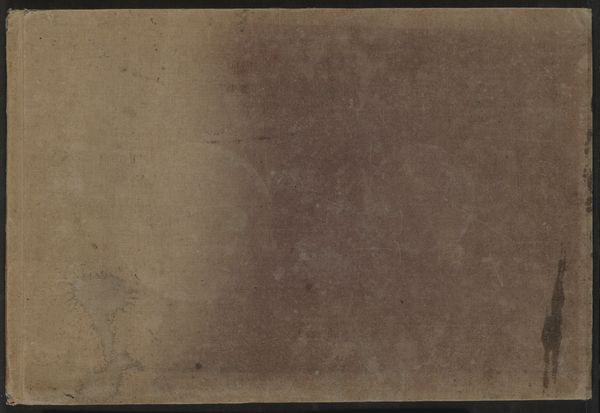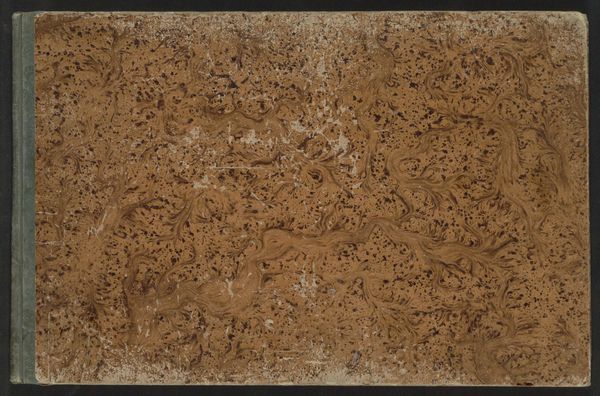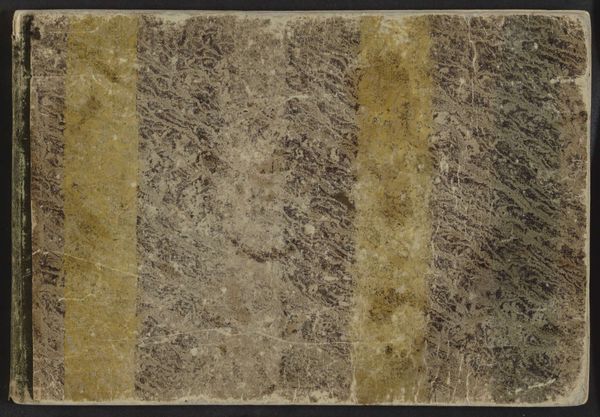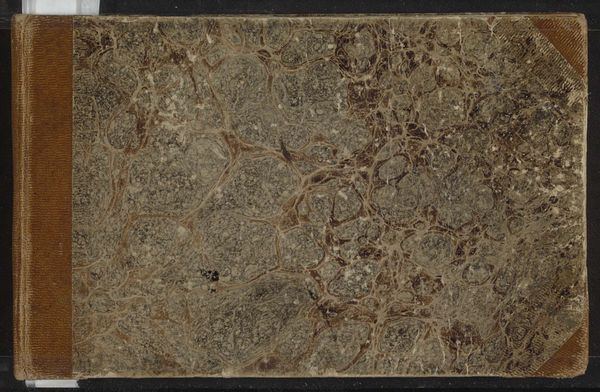
paper
#
paper
#
organic pattern
#
natural texture
#
organic texture
Dimensions: height 199 mm, width 263 mm, thickness 4 mm, width 527 mm
Copyright: Rijks Museum: Open Domain
Curator: Looking at this artwork, "Sketchbook with 11 Pages," dating from somewhere between 1828 and 1897 and attributed to Adrianus Eversen, I'm struck by the material—paper rendered with a frottage technique. Editor: It's incredibly tactile! I immediately want to know what texture lies beneath, hidden yet so emphatically present. Is it bark? Rock? The artist teases us with this organic abstraction. Curator: Considering Eversen’s time, this sketchbook resonates with broader socio-political trends, particularly an intensified engagement with the natural world influenced by colonial exploration and scientific discovery. The choice to create texture from nature through frottage brings questions of extraction, appropriation, and representation into play. Editor: I see that. The way the light and dark interact across these biomorphic shapes certainly evokes systems present in nature. It’s also undeniably a flat surface. Is this tension perhaps what gives it that "organic texture" you referenced earlier? Curator: Exactly. It questions our very perception—our gaze traces patterns while also highlighting our social structures, how we understand and represent them, especially how this knowledge circulates between art, science, and society. Think about the development of visual culture at the time. Editor: Yes, the surface design really directs us to examine the tension between lived experience and observed data. We could apply that to so many things going on during those decades! Curator: It's almost a subversive commentary then, right? Taking the natural, the foundational, and flattening it out through artmaking—forcing an audience to reassess those values and origins. Editor: I now appreciate Eversen's piece more than I initially did. The dialogue you have laid out provides valuable context for experiencing such work. Curator: And your perspective gives depth to my interpretation, helping me see the visual language and consider how meaning can be built through formal analysis, which ultimately changes how we interpret this work socially.
Comments
No comments
Be the first to comment and join the conversation on the ultimate creative platform.
